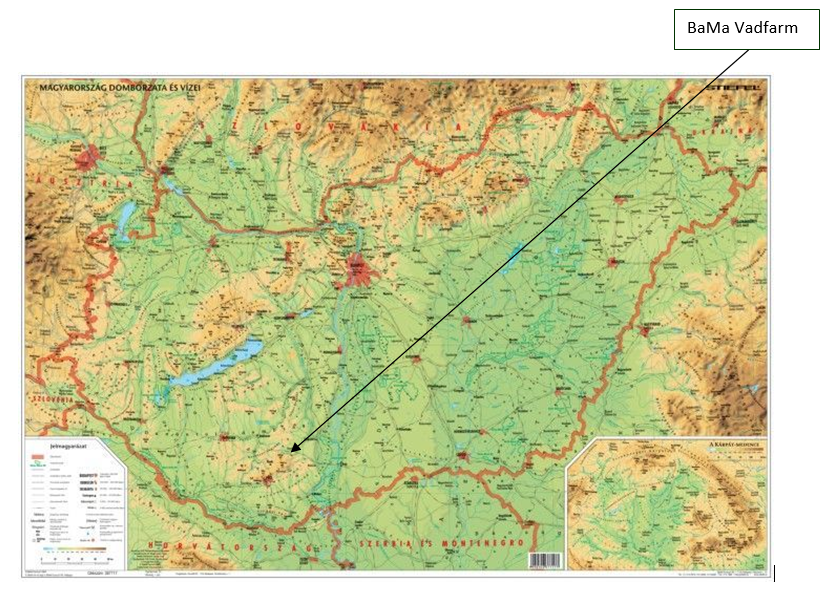In Central-Europe, in Hungary, Tolna, Somogy and Baranya counties have always been famous for their big game population. Our game farm is located on the border of these three counties in Tolna, on the edge of Bonyhád, on the property of the Aparhant Diana Hunters’ Association.
This about 10 acres of land lies in a valley which has its own water sources. These springs collect in the Aparhant stream. A mill was built over the water in the 18th and 19th century. The ruins, basements, and barrages of which can still be found to this day in this area.
The soil is clayey and heavy, so the common agricultural plant production is not enabled. In possession of the information above, we decided in 2014 that we establish a game farm on the area which had been unused for more than 30 years.
The red deer can only be observed here during the rutting season, their main habitat is located on the land of the Gemenci Erdő Vadgazdasági Rt., Gyulaj Erdészeti és Vadászati Zrt and the Mecsekerdő Zrt.
The Hungarian laws for establishing a game farm do not enable to build up the game population through capturing wild animals. This practice wouldn’t even be adequate for the wild animals from the viewpoint of the restricted area-based game farming, since the big game of wild origin hasn’t seen a fence before, and it would ruin their wellbeing.
All our breeder stags were bought at farms in Hungary and in neighbouring countries. This wide spectrum of genetic background insures the basis of our excellent red deer population. We attempt to preserve the typical Central and East European red deer population and to provide our customers with our breeder animals. It is not our aim to purchase non-European genetic heritage or to mix it with the European.
Unfortunately, the climate change of recent years has reached our region, and the previously ordinary weather conditions have changed to a great extent. This area was characterized by continental climate before which did not affect the game population in a negative way. Typical were precipitation between 650 and 700 mm and mean temperature of 10,5°C. The average hours of sunshine are high countrywide, overstepping 2100 hours. The prevailing wind direction is NW, the average wind speed is 2,9 m/s.
The experiences of recent years indicate that the annual amount of precipitation is nearly halved, and the daily mean temperature is increasing. For this reason, it is very important that the property of our game farm has water sources and trees growing on it.
The seeded meadows and fields reflect the lack of precipitation. That is why our red deer are fed roughage and it seems to be permanent. We attempt to secure our animals with food based on own recipe which completely fulfils their needs in all stages of development.
The area of the farm was divided into several plots that enable to separate our red deer by sex and age group. In this way we can select our animals and breed the ones that worth it. Our deer are given unique IDs, so inbreeding is prevented.
We ensure that our animals receive veterinary check-ups constantly. The veterinary treatments are simplified in a building planned by us which is equipped with several enclosures, veterinary scales, and treatment units. Our animals are used to the treatments, we can examine, treat, vaccinate, and deworm them stress-free and without anaesthesia.

Our family was great help in the establishment of the farm, without their selfless assistance it would not have been possible. They helped with the handling of springs, with the constructing of fences and buildings, with the everyday tasks, and with the clearing of the area which remained unused for 30 years.
We help those who want to license their game farm with bringing their concepts to fruition.
We hope this description of our activities has roused your interest and look forward to your enquiries or to a personal meeting.
Our animals are transportable due to the construction of a suitable operating building nearly the whole year.:
The veterinary documentation for transport of red deer is always ensured and in case of stags also their formerly cut antlers, so their further development can be tracked. A weight measurement occurs at every veterinary appointment which helps tracking the punctual weight gain and the systematic documentation of the animal’s health data. This data is stored regarding every animal in our own database.